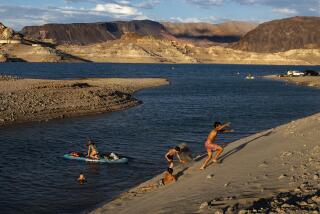Glacier melt accelerating, federal report concludes
- Share via
WASHINGTON — The federal government Thursday released the most comprehensive study of melting glaciers in North America -- and the results show a rapid and accelerating shrinkage over the last half a century because of global warming.
One of the glaciers in the study, the South Cascade Glacier in Washington state, has lost nearly half of its volume and a quarter of its mass since 1958, scientists from the U.S. Geological Survey said. The two others in the study, the Wolverine and Gulkana glaciers in Alaska, have both lost nearly 15% of their mass.
In all three cases, the melting has increased over the last two decades. The acceleration is the result of warmer, drier climates in the Pacific Northwest and Alaska caused by global warming, the researchers said.
“By having a 50-year record, you can look over what’s going on, look over the meteorological, climatological record, and really get an idea of what’s going on in the mountains,” said Edward Josberger, a scientist with the USGS Washington Water Science Center in Tacoma, Wash., who has worked for a decade on the study.
“Climate change effects are starting to become more and more noticeable,” he added, “and this is one of the effects that’s being displayed.”
The three glaciers in the study are known as “benchmark glaciers” because their varying climates and elevations are representative of thousands of other glaciers across the continent.
For five decades, USGS researchers have periodically measured the glaciers’ size with tools including measurement stakes and photographic surveys. Their data include tallies of winter snow accumulation and summer melt.
In each case, the data show that summer melting accelerated in the last 20 years. At the same time, winter snowpacks have tapered off. The reduced accumulations and increased melts have resulted in shrinking glaciers.
South Cascade Glacier, for example, had a volume of nearly 0.06 cubic mile of water in 1958, Josberger said. By 2008, it was down to 0.03 cubic mile.
When glaciers shrink, water runoff declines, setting the stage for drier conditions in the region, particularly at the end of summer, when other supplies of water dwindle.
In the past, shifting ocean conditions explained some of the shrinking trend, the USGS researchers reported. But the latest acceleration suggests rising temperatures are “overwhelming” those natural cycles, the report concluded.
--
More to Read
Sign up for Essential California
The most important California stories and recommendations in your inbox every morning.
You may occasionally receive promotional content from the Los Angeles Times.










